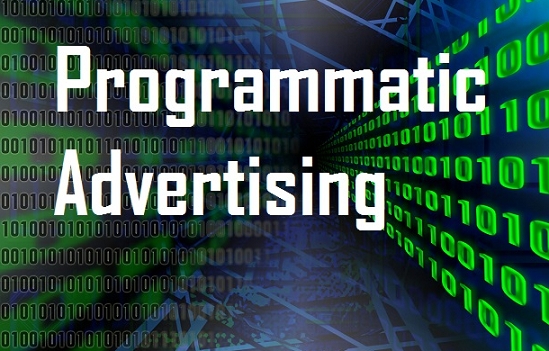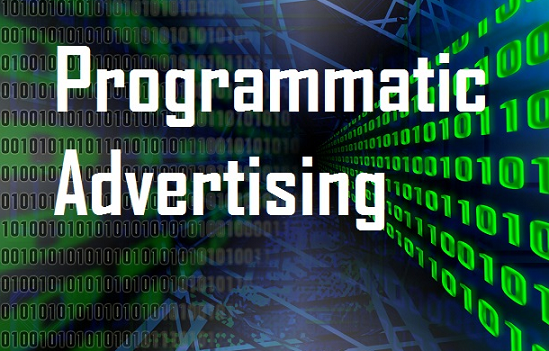
 Programmatic online advertising is on the rise, and is performing well against lower-funnel metrics such as purchase intent. However, it is not yet realising all of its brand-building potential against upper funnel metrics such as awareness and communication.
Programmatic online advertising is on the rise, and is performing well against lower-funnel metrics such as purchase intent. However, it is not yet realising all of its brand-building potential against upper funnel metrics such as awareness and communication.
Various factors, such as advertising fraud and viewability, are holding back the full potential of programmatic. In order to maximise returns, marketers need to adopt best practices for campaign planning and measurement.
Programmatic adoption has continued to soar across the globe and its trajectory points to further growth. According to Magna Global, the global programmatic market will grow from $14.2 billion in 2015, to $36.8 billion in 2019*.
Potential benefits from programmatic are numerous, including cost-efficiency and real-time targeting, that have helped propel it to the mainstream of media trading.
With these benefits though, issues of transparency and media quality have come to the forefront for many advertisers and their agencies as they question whether their media spend is delivering effectively on their goals – from campaign delivery to consumer impact. Programmatic campaigns are typically bought and optimised based on behavioural metrics (e.g. Cost Per Acquisition), and relatively little attention has been paid to the important longer-term role that programmatic campaigns play in building brands.
This report looks at key findings from Kantar Millward Brown and comScore on the impact of programmatic on brand metrics and campaign delivery. The results are based on billions of impressions from hundreds of campaigns monitored across the globe to shed light on how advertisers and agencies can improve programmatic performance.
Viewability and Invalid Traffic in Programmatic Trading
There are a variety of factors that impact a campaign’s success regardless of how the ad is delivered – traditionally or programmatically. Ad type, format, context, for example, all play a critical role in an ad’s success as do quality issues associated with viewability and IVT.
After all, if an ad is not seen by a real person, then it can’t possibly do its job. In programmatic, issues associated with viewability and IVT are often magnified due to the lack of transparency in the ecosystem. This is why validating impression delivery has become a critical component of campaign evaluation, especially in programmatic.
A snapshot of global campaigns monitored through comScore validated Campaign Essentials (vCE), found that impressions run through programmatic exchanges had lower viewability rates compared to those purchased through direct buys.
When looking at IVT rates the same trend emerged, showing that programmatic buys are more susceptible to invalid traffic when compared to direct buys. The issue of invalid traffic is further exacerbated when looking at video inventory, where the higher CPMs of video provide a ripe opportunity for fraudsters to reap even greater gains. IVT rates on programmatic video are nearly double those seen through direct buys. Further, the fraudsters are getting smarter. comScore, which is accredited by the Media Ratings Council for its Sophisticated Invalid Traffic (SIVT) detection capabilities, found that SIVT accounted for 86% of all IVT detected and filtered by comScore in Q4 2016.
SIVT is far more difficult to detect and includes issues like adware, malware, hijacked devices, and stacked ads, amongst others.
Beyond viewability and IVT, other contributing factors to campaign success in programmatic may include:
• Ad type: Programmatic campaigns are more likely to be direct response ads. With a focus on generating an action or behaviour, there is understandably less space in those same ads for brand-building messaging. With a greater focus on branding messaging in programmatic campaigns we might see stronger effectiveness results.
• Context: Programmatic campaigns tend to include less premium content. We know that placements in high-value publications tend to result in stronger brand impact.
• Industry readiness: It is possible that some advertisers are still learning and optimising their programmatic buying, or establishing the data systems to enable effective programmatic media buys. Experience certainly varies by country, and it makes sense that various industry training initiatives are underway to build greater confidence among marketers.
• Strategic focus: Within some advertisers it could be that programmatic is something of an afterthought within the overall media plan, so this media element may not yet be receiving the level of planning attention that it deserves.
Implications & recommendations
Here are four ways to improve the return on programmatic campaigns.
1. Think Beyond Cost-Saving.
IAB Europe research** has shown that more mature markets do not just attempt to use programmatic to lower the cost of media (70% of advertisers in markets new to programmatic vs. 50% in advanced markets). Rather, they also want to realise more strategic benefits such as delivering relevant ads by scaling their brand advertising campaigns (37% of advertisers in markets new to programmatic vs. 50% in advanced markets).
2. Improve Delivery.
Although programmatic is often more susceptible to lower viewability and higher IVT, the increasing industry awareness and education on the topics are creating the opportunity for improvement so the full benefits of programmatic trading can be experienced. The use of accredited solutions to monitor viewability and IVT, both general and sophisticated levels, are creating more transparency for advertisers and their agencies to understand campaign delivery and actively improve campaigns in flight by optimising toward highviewability and low fraud inventory. Working with trusted, accredited partners can help ensure that campaigns have the chance to be seen by humans and thus an opportunity to have a real impact.
3. Tailor Role Of Programmatic to Campaign Objectives.
Programmatic should likely be a higher proportion of campaign spend when lower-funnel purchase intent metrics are the primary campaign objective. When awareness or messaging is the primary objective, caution is required to ensure that programmatic contexts or targeting parameters are not reducing potential cutthrough.
4. Aim High.
Integrated viewability and brand effectiveness studies have already demonstrated that marketers should not just focus on whether an ad is seen or not. While some viewability is clearly better than none, longer viewability time periods have a much greater impact on brand metrics. Advertisers and agencies should therefore be optimising total time viewed, not just % viewable. For example, on one study, we saw more than 10X the impact on purchase intent amongst the people with the highest campaign view time. Given this, we strongly recommend integrated, end-to-end measurement of both delivery and brand effectiveness so that advertisers are able to understand the role viewability, and other delivery criteria, play in the success of programmatic campaigns.
Source:Kantar Millward Brown
